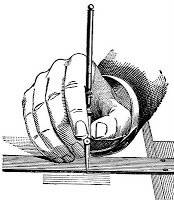The clauses in a license agreement vary based on the nature of the patented invention. Each technology has certain unique characteristics and applications, which influence license drafting. Some of the basic clauses that go into every license agreement are as follows:This post is in furtherance of the post “Sensing Licensing Opportunities”. A license is an authorization given by the patent holder to exercise the exclusive rights granted by the patent. It permits the person acquiring the license to practise the patented invention in the manner allowed under the license. Therefore, a license agreement must clearly specify the terms and conditions for exercising rights with respect to the patented invention. In order to be valid, a patent license agreement must be signed and executed by both the parties. It must also be registered with the patent office within six (6) months from the date of execution
a. Recitals or Background clause
This clause sets the context to the license agreement and introduces the parties. Though it does not form the core of the agreement, it could be very useful for interpreting clauses in the agreement because it sets forth the objectives.
b. Definitions or Interpretation Clause
This clause defines the important terms or phrases used in the license agreement. Generally, terms or phrases that are very important for the agreement or used number of times are defined.
c. Grant Clause
This clause can be considered to be the most important clause in the agreement. It lays down the rights granted and terms and conditions that are associated with such a grant. In addition to rights, territory, field of use, type of license and sub-licensing are also covered in this clause. The clause must be carefully drafted in order to give life to the deal between the parties.
d. Royalty Clause
The royalty clause provides the consideration paid by the licensee, the person acquiring the license, to the patent holder in return for the grant of license. Royalty may be lumpsum fixed or running based on the agreement between the parties. Most royalty clauses are hybrid clauses having more than one kind of royalty.
e. Term and Termination
This clause defines the term of the license. A license beyond the term of the patent or after its invalidation or lapse is not valid. The clause generally provides the modes of termination, consequences of termination and post-termination obligations.
f. Other clauses
Warranty, Indemnity, Liability, Jurisdiction, Choice of Law and so on are some of the other clauses that are incorporated in license agreements and are the subject of negotiations. Depending on the nature of technology being licensed other relevant clauses such as support, updates and so on for software licenses, clinical studies, drug approvals and so on for pharma licenses and so on may be incorporated.
As mentioned earlier, the license agreement must give life to the deal struck by the parties in a legally valid manner. So, the starting point for every license agreement is the deal document.
Image from here

Drafting Valid Patent Licenses
First Publication Date: 8th December 2010
To know more about the Intellectual Property services offered by BananaIP (Earlier known as Brain League) visit bananaip.com


